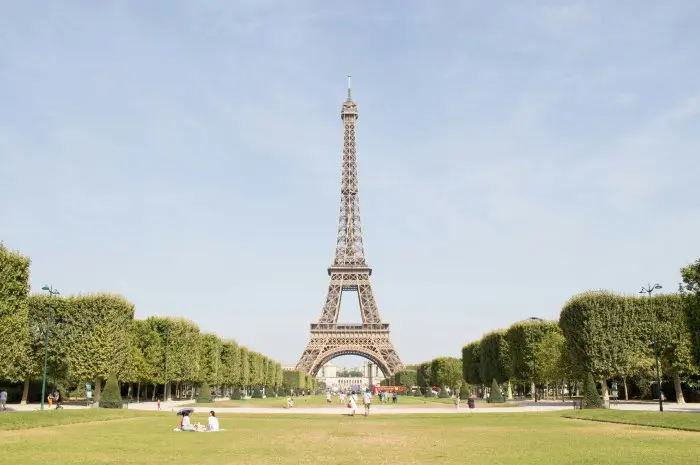Delve into the rich history, architectural brilliance, and cultural significance of the Eiffel Tower, exploring why it remains Paris’ most iconic landmark and a symbol of France worldwide.
The Eiffel Tower, an enduring symbol of France and one of the most recognized structures in the world, continues to captivate millions of visitors each year.
Originally constructed for the 1889 Exposition Universelle to celebrate the 100th anniversary of the French Revolution, the Eiffel Tower was initially criticized by some of Paris’s leading artists and intellectuals for its design but has since become a beloved and irreplaceable fixture of the Paris skyline.
This article explores the Eiffel Tower’s fascinating history, unique architecture, cultural impact, and its role in Parisian and global culture today.
1. Historical Context and Construction
The Eiffel Tower was designed by the French engineer Gustave Eiffel, primarily to demonstrate France’s industrial prowess to the world during the 1889 Exposition Universelle in Paris.
Its construction began in January 1887 and took just over two years, a remarkable feat considering its size and era.
Made of iron and assembled with over 2.5 million rivets, the structure was an engineering marvel of its time, showcasing new metalwork techniques that would go on to influence future architectural designs.
2. Architectural Features and Design Innovations
Standing at 324 meters tall, the Eiffel Tower was the world’s tallest man-made structure until the completion of the Chrysler Building in New York in 1930.
It consists of three levels accessible to the public, with restaurants on the first two levels and an observation deck on the top.
The tower’s design, characterized by its lattice ironwork, minimal resistance to wind, and aesthetic appeal, broke new ground in architectural engineering and is considered a masterpiece of structural ingenuity.
3. The Tower During World War II
During World War II, the Eiffel Tower experienced a dramatic period in its history. When Hitler visited Paris in 1940, the French famously cut the lift cables of the tower so that Hitler would have to climb the steps if he wanted to reach the top.
Throughout the occupation, the tower remained closed to the public and was not restored to its full function until 1946. It served as a symbol of both defiance and endurance during these challenging years.
4. The Eiffel Tower as a Scientific Instrument
The Eiffel Tower has also served various scientific purposes throughout its history. Gustave Eiffel designed it with a meteorological observatory on the top level, and over the years, it has been used for everything from radio transmission experiments to aerodynamics research. The tower continues to support antennas broadcasting radio and television signals across Paris.
5. Renovations and Technological Upgrades
Over the decades, the Eiffel Tower has undergone numerous renovations to enhance its safety, accessibility, and visitor experience.
The most recent renovation in 2019 introduced a new glass floor on the first level, allowing visitors to experience a thrilling new perspective of the structure.
The tower has also been fitted with energy-efficient lighting and solar panels to align with contemporary environmental standards.
6. Cultural Impact and Symbolism
Beyond its architectural and historical significance, the Eiffel Tower has become a cultural icon, symbolizing love, beauty, and innovation.
It appears in countless works of art, films, and literature and continues to inspire awe and creativity. The tower’s image is instantly recognizable worldwide and often used in media and advertising to represent not just Paris, but the idea of romance and elegance.
7. The Eiffel Tower in Film and Literature
The Eiffel Tower’s cinematic and literary presence is profound. It has been featured in numerous films such as “Amélie” and “Midnight in Paris,” and books like Ernest Hemingway’s “A Moveable Feast.”
In these works, the tower often symbolizes adventure, romance, and the artistic life. Its role in popular culture has solidified its status as a global icon of France’s artistic and cultural influence.
8. Economic and Touristic Significance
The Eiffel Tower is not just a cultural symbol; it is also a major economic asset to Paris. It attracts nearly 7 million visitors annually, making it one of the most visited paid monuments in the world.
The tourism revenue generated by the Eiffel Tower supports local businesses and contributes significantly to the city’s economy.
9. Annual Events and Celebrations
The Eiffel Tower is central to numerous Parisian celebrations and public events, including Bastille Day fireworks and the annual New Year’s Eve countdown.
The tower is specially lit for various occasions, using a lighting system that can display millions of colors, adding to the city’s festive atmosphere during major events.
10. Future Prospects and Innovations
Looking to the future, plans for the Eiffel Tower focus on maintaining its historical integrity while adapting to modern needs. Projects to improve the surrounding areas and enhance the visitor experience are ongoing.
The management continues to implement technological advancements to ensure that the Eiffel Tower remains a beacon of French culture and ingenuity in the 21st century.
The Eiffel Tower stands as a testament to human creativity and resilience. From its initial conception as a temporary exhibit to its status as a global icon, the tower has witnessed and adapted to over a century of historical shifts.
As it continues to captivate and inspire, the Eiffel Tower remains not only a key destination for travelers but also a profound symbol of the spirit of Paris and France at large.








